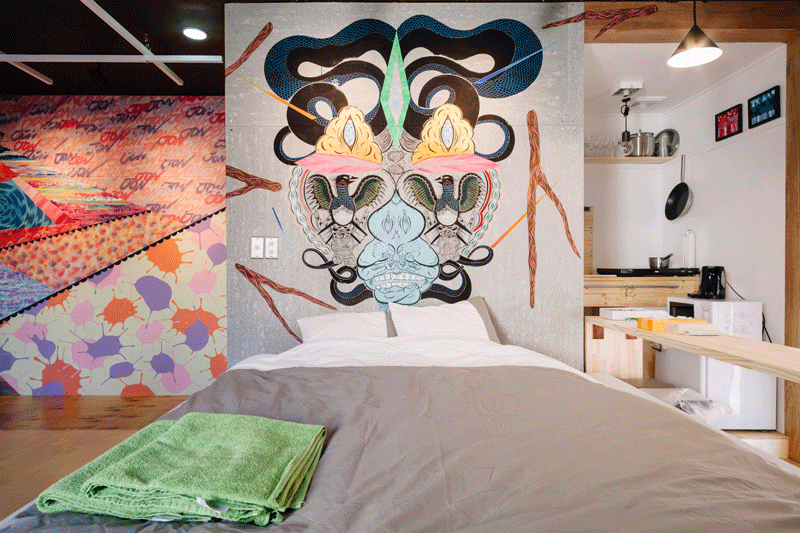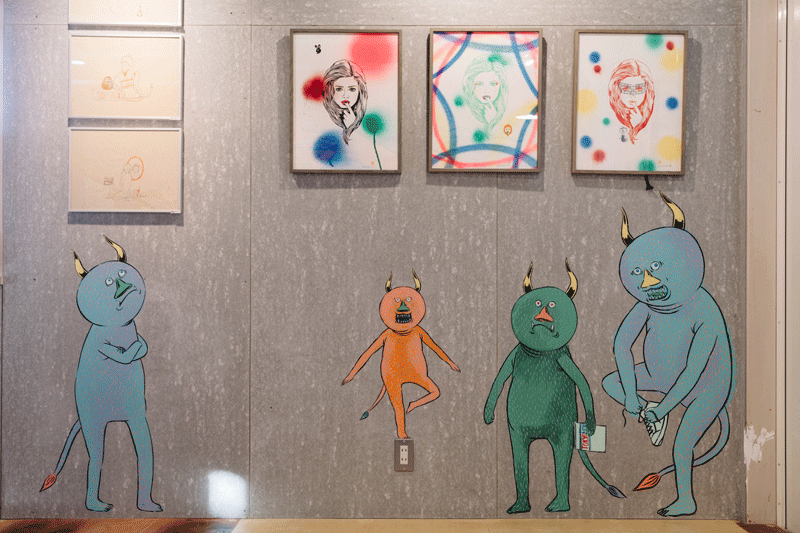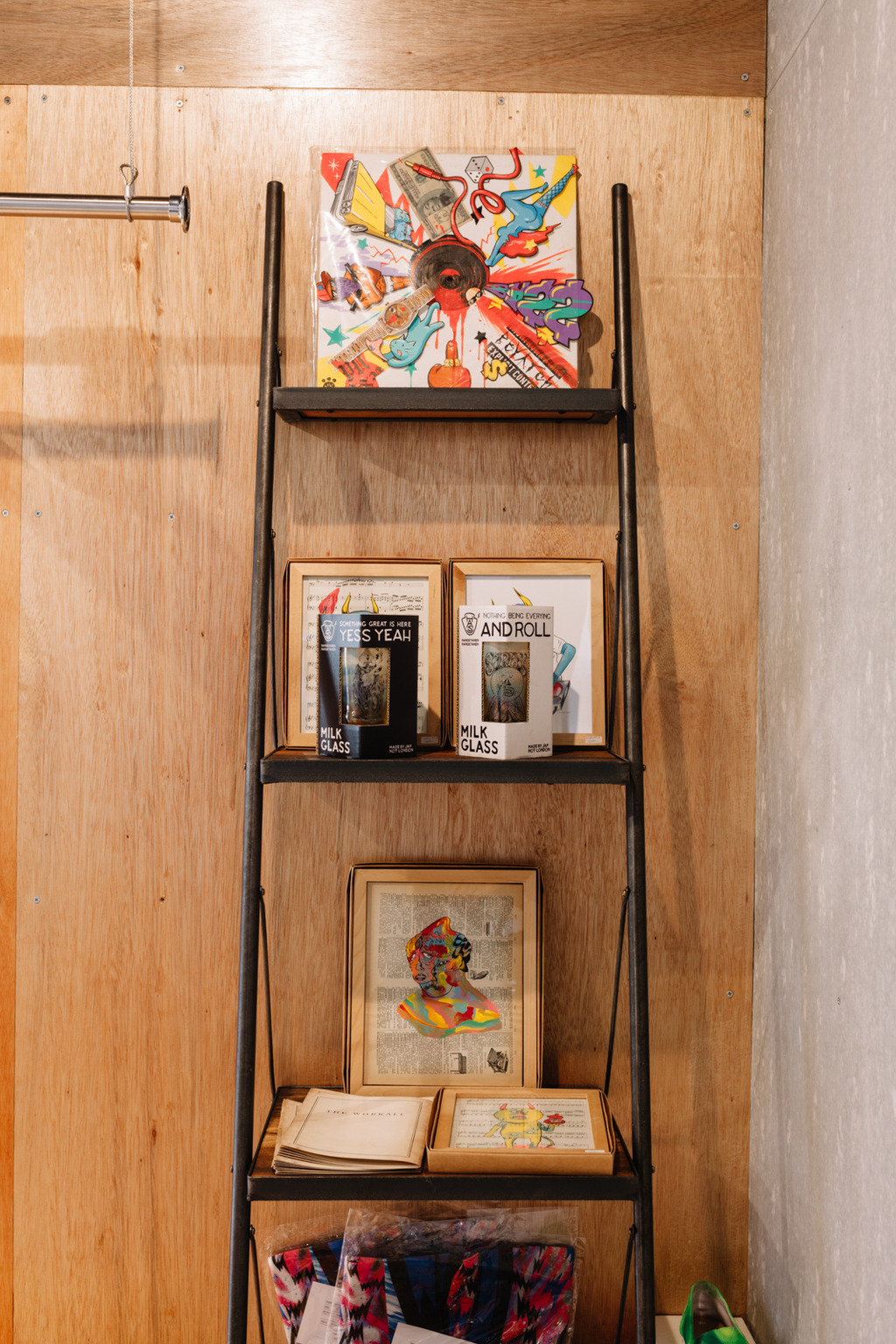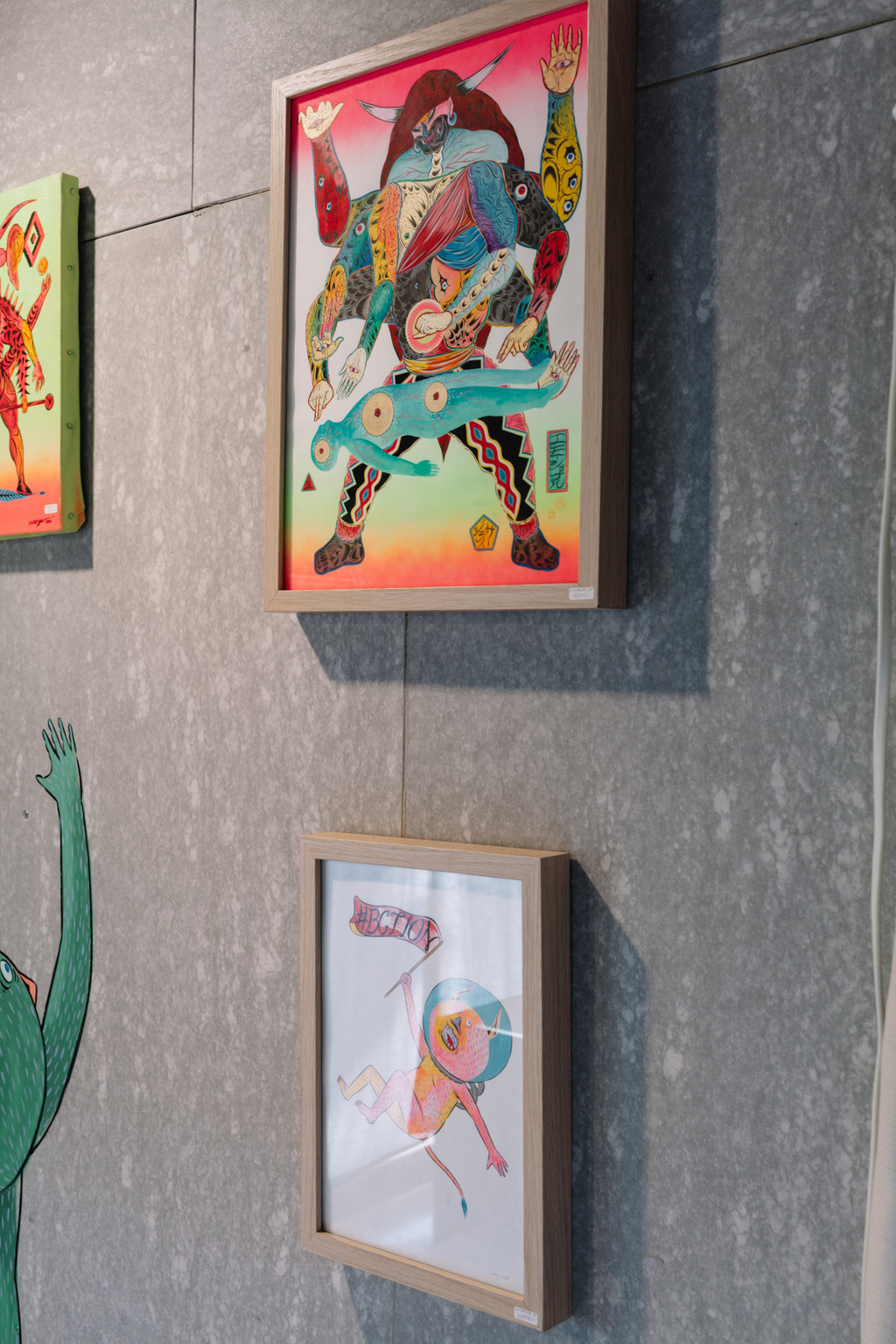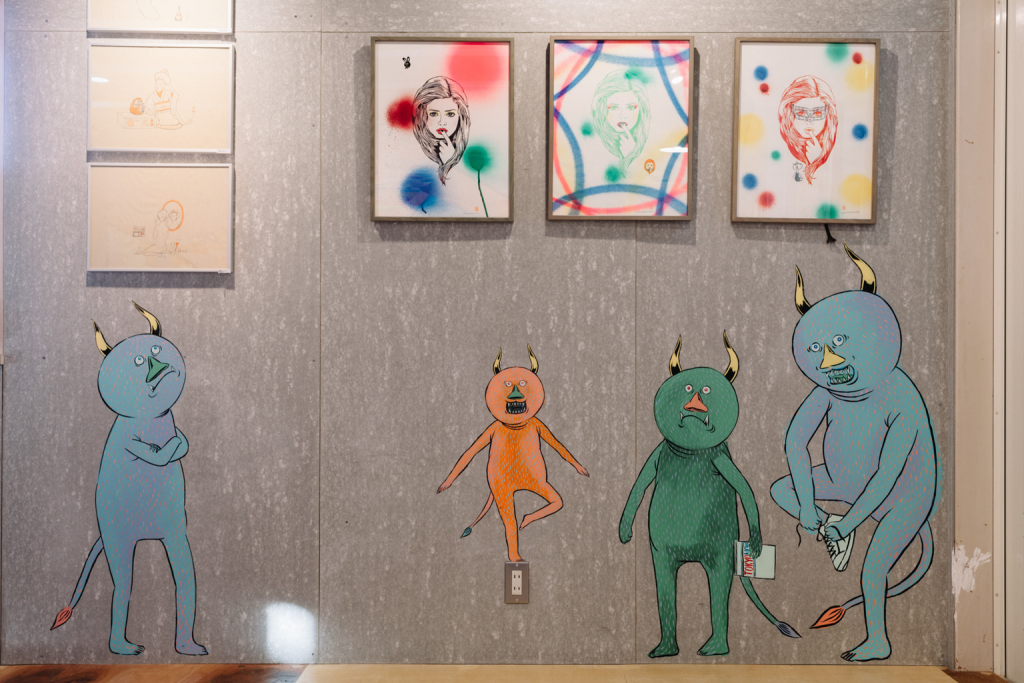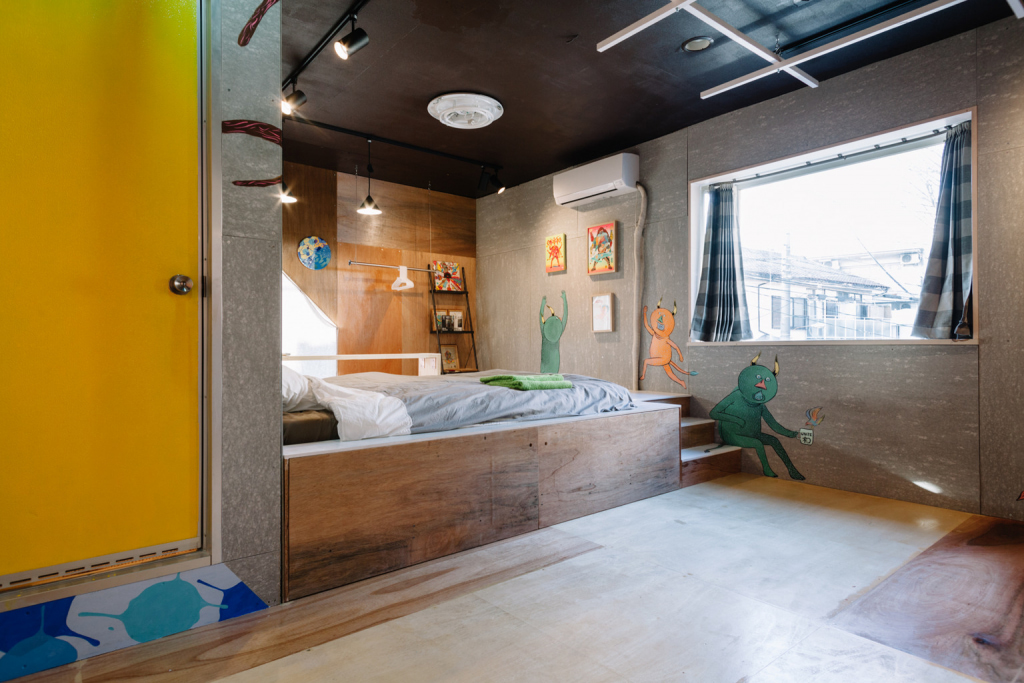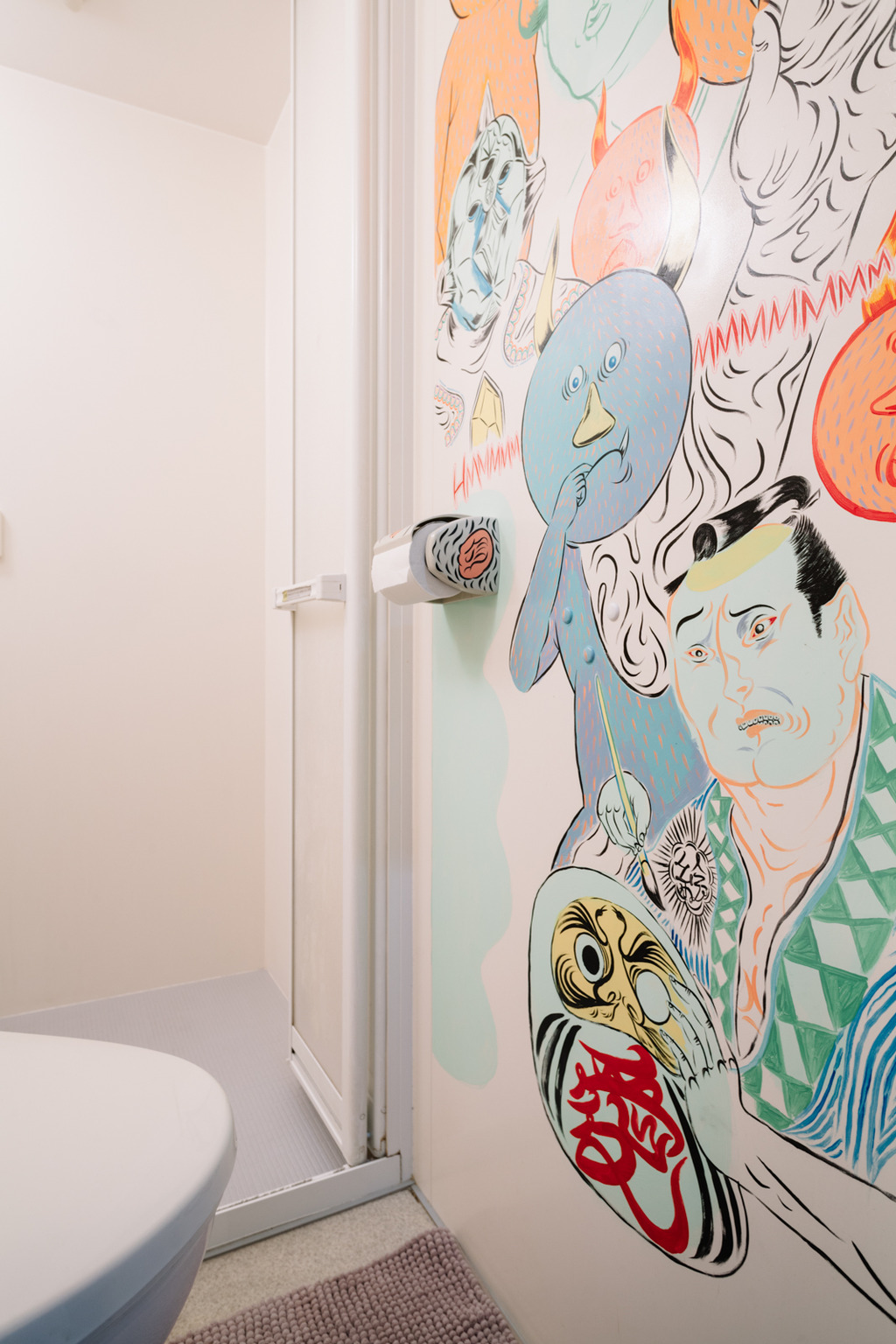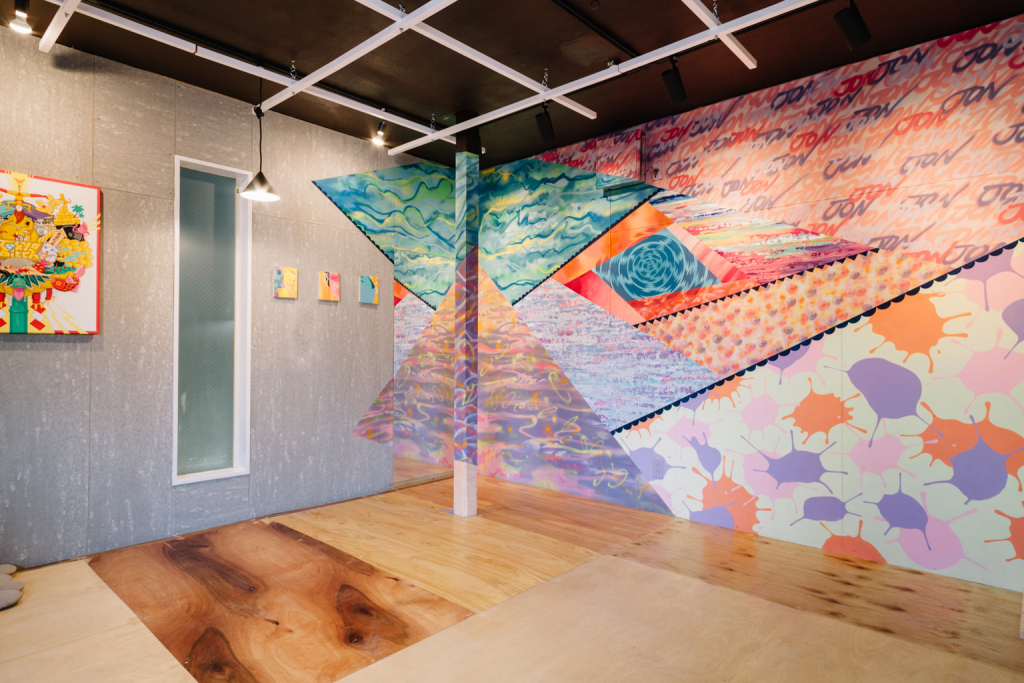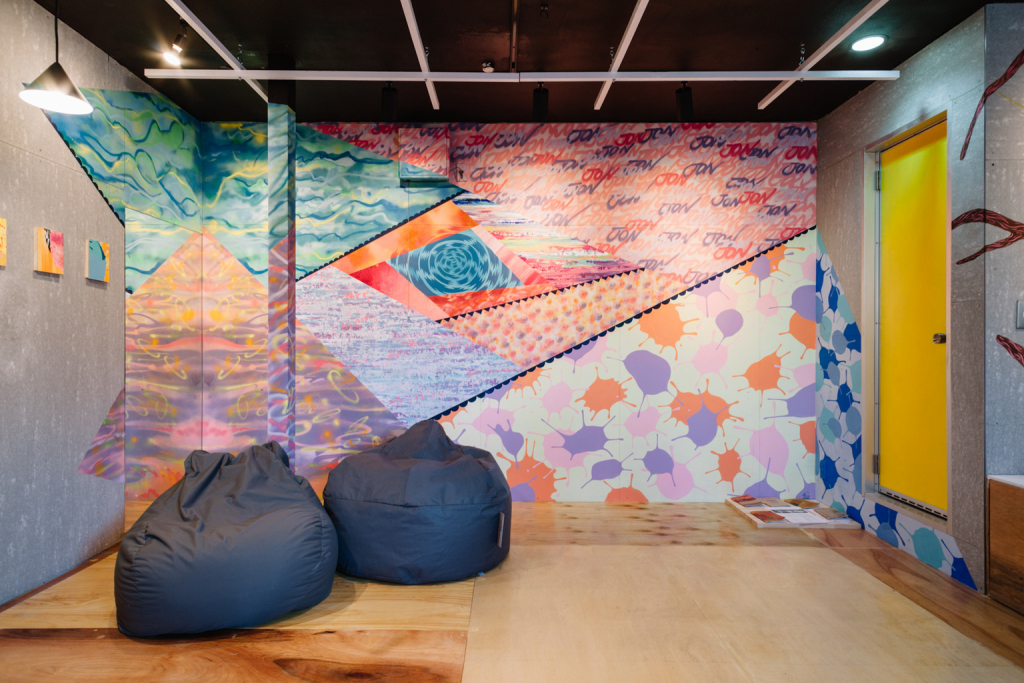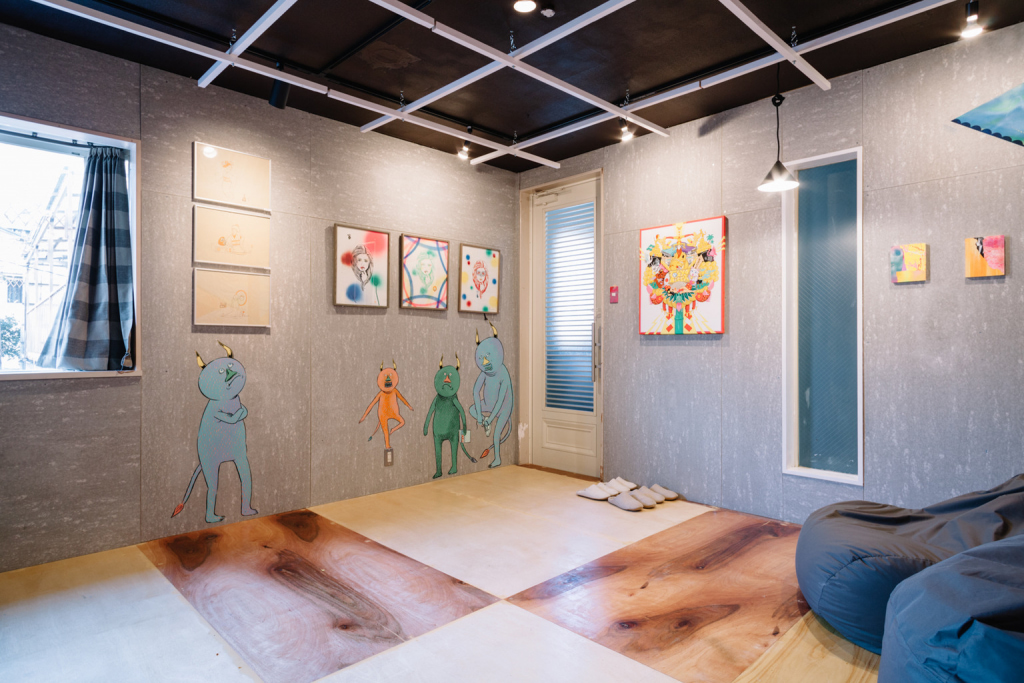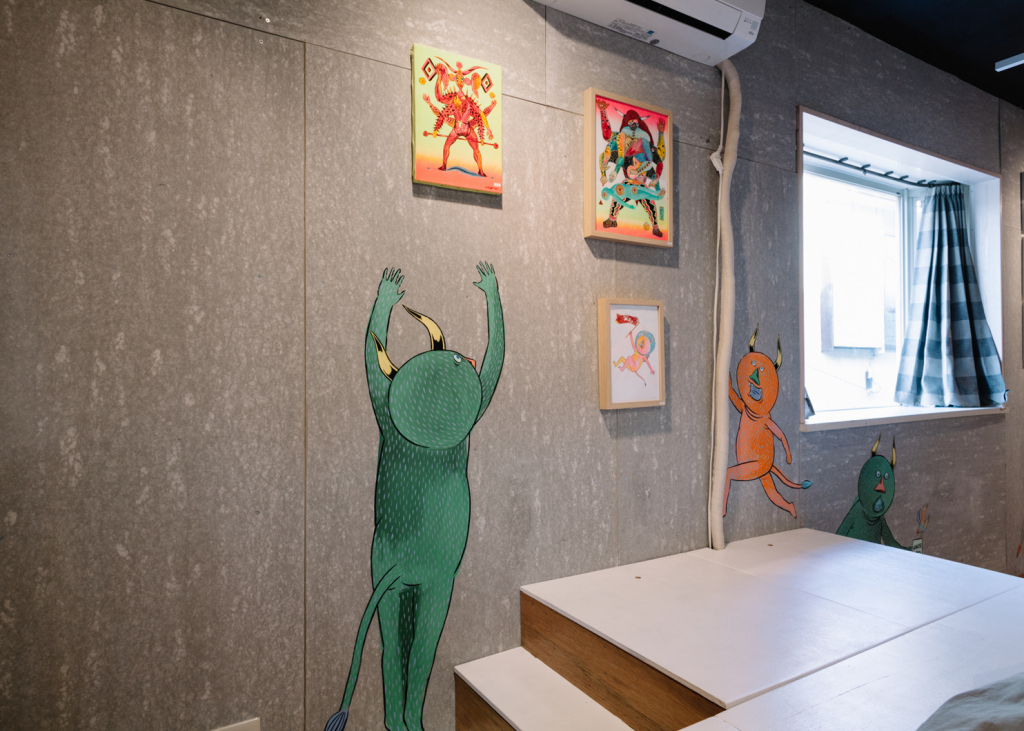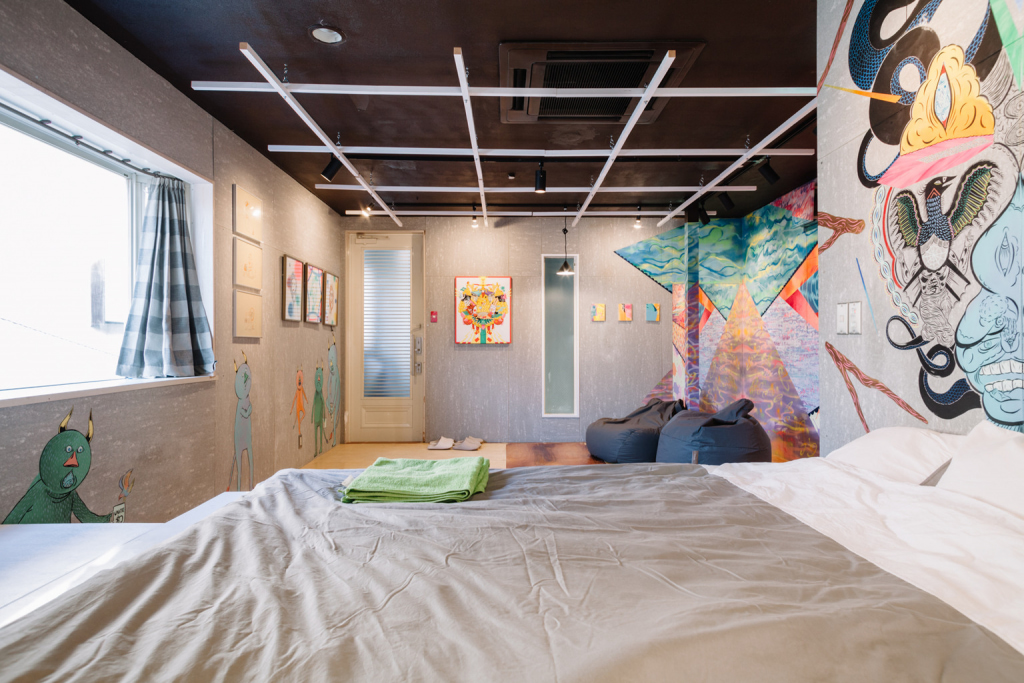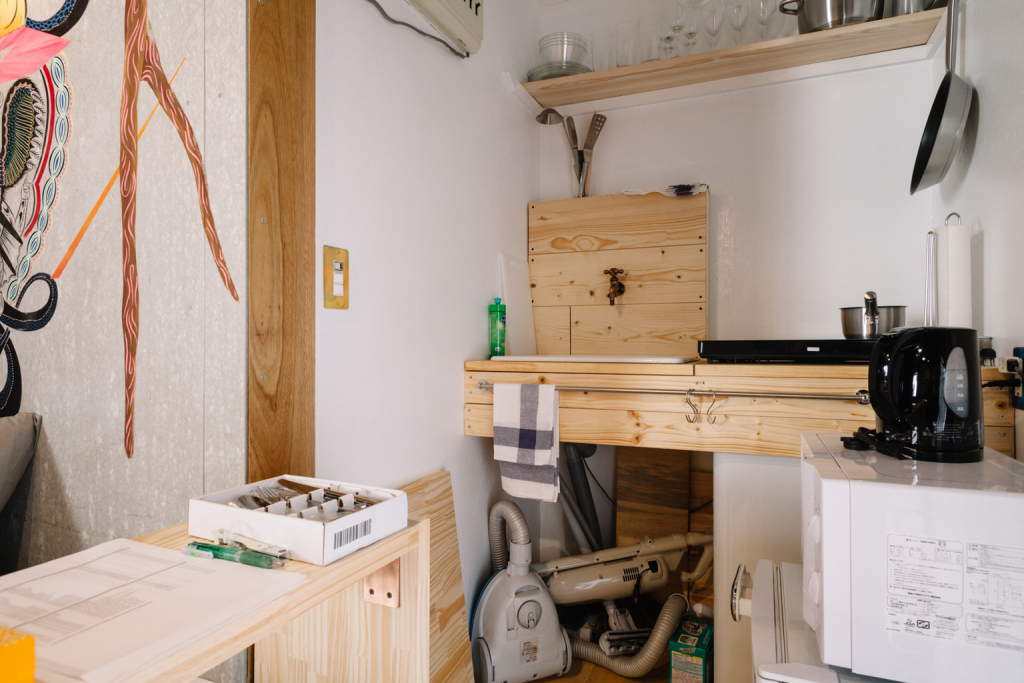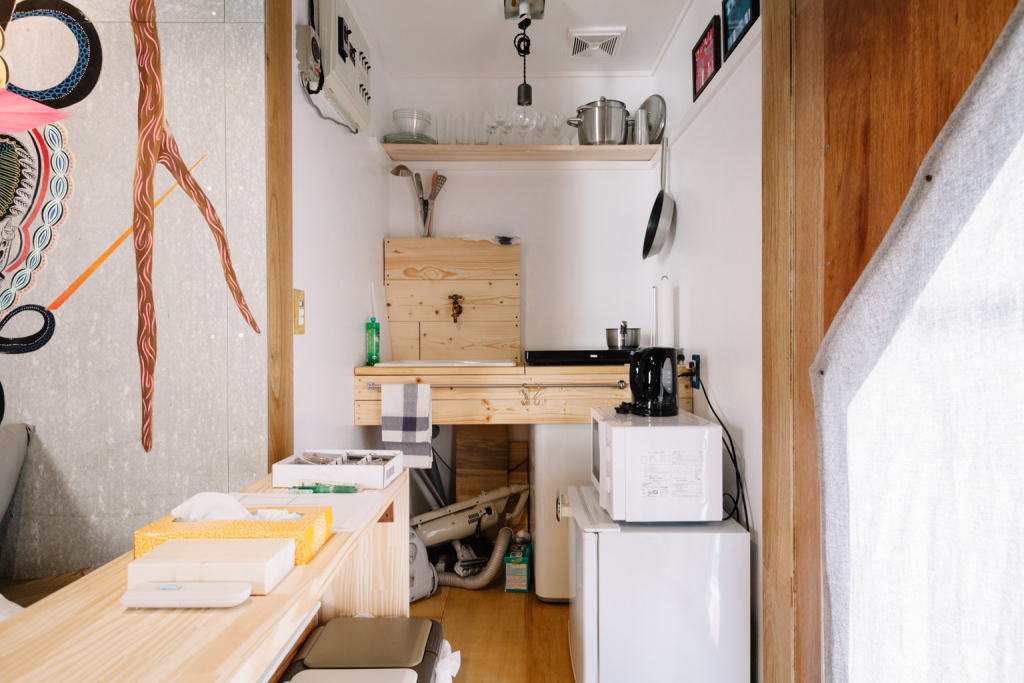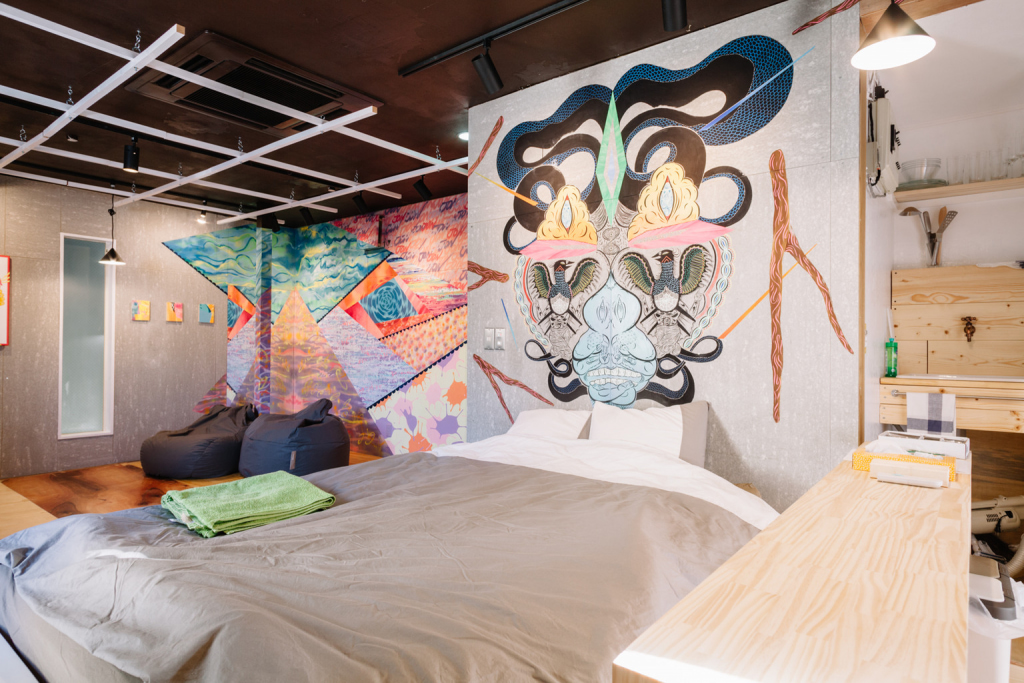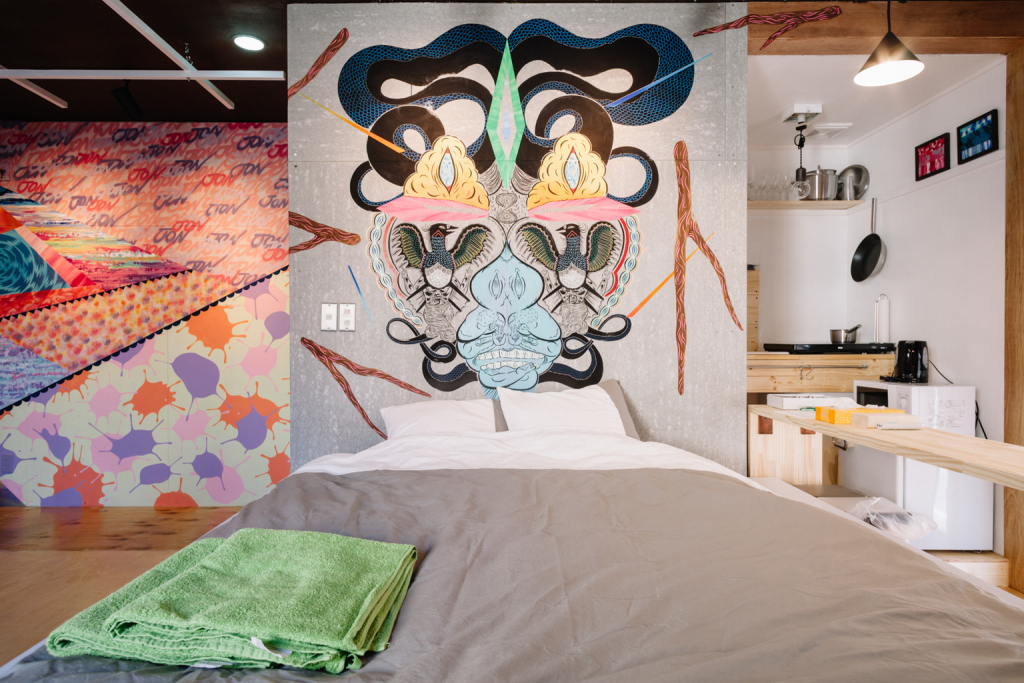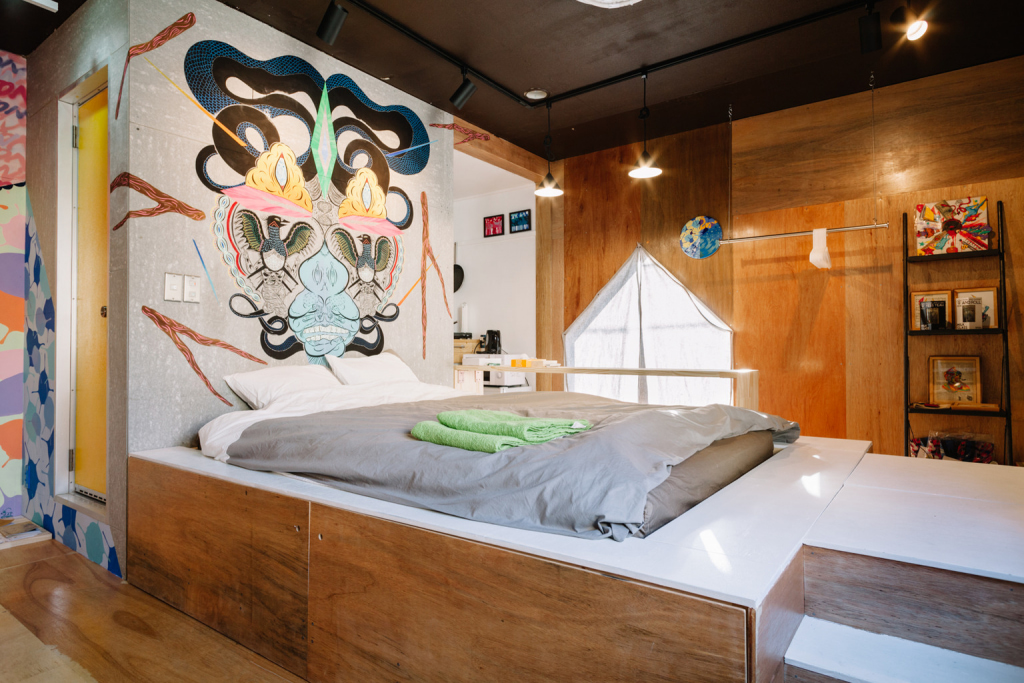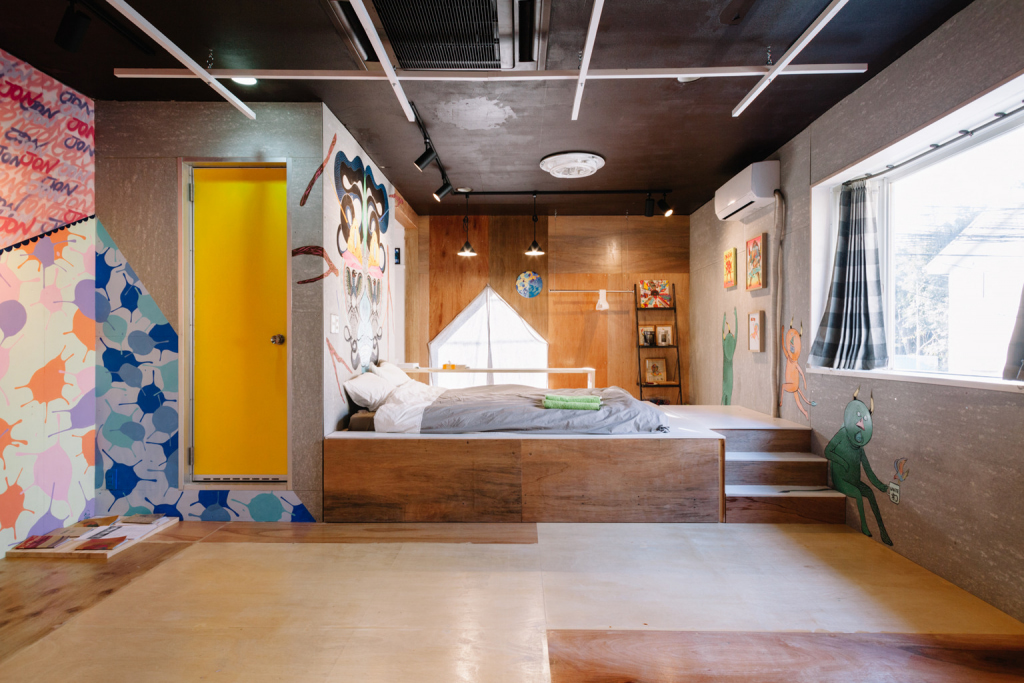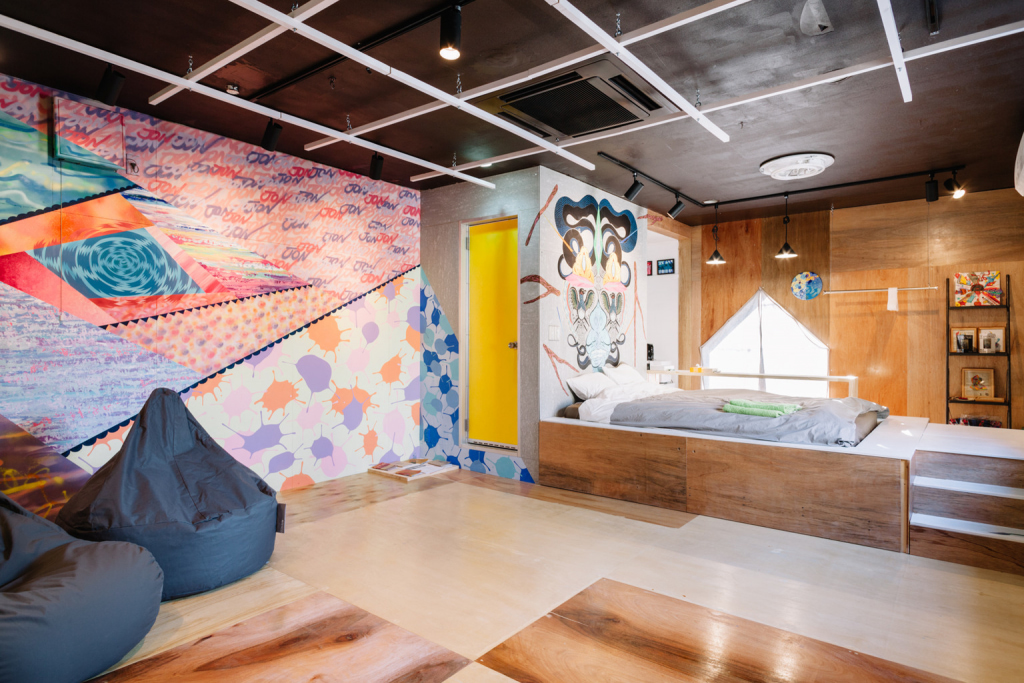Yu Tazawa and Yuto Maeda wanted to create a visually striking hotel experience that connected visitors with Japanese contemporary art. The two entrepreneurs had been working in hospitality—mainly through airbnb rentals—and decided they wanted to up the ante, creatively.
Interview by Rachel Cassandra
Yuto says, “Normal rooms can be kind of boring.” So the team decided to work with Japanese artists to create an art hotel, a space to showcase the amazing art often hidden from foreign travelers. “After running a few AirBnb rooms,” says Tazawa, “we know the value of visuals, especially nowadays when people book online.”
The two entrepreneurs teamed up with architect Keigo Fukugaki, who had worked with large companies like Facebook to organize artist installations. Through his work, Keigo had noticed that even when artists were paid to make art for companies, none of them could make a living from it. Japan’s contemporary art is a thriving, cutting-edge organism but even the most talented Japanese artists rarely survive solely on income from their art.
“Japanese [people] don’t have a culture to buy art and hang it on their walls,” Tazawa says, “because there’s no culture of inviting people into your house.” In other countries, buying and displaying art acts as a mark of social status, an expression of the personalities of the people who live there. Here galleries tend to be geared to high-end, connected collectors, so even visitors interested in buying Japanese art have trouble finding it. “Most of the galleries are hidden, like on the third floor of an unassuming building,” Tazawa says. “Art is not necessarily even displayed. The best ones are in the back and they’ll take it out for you.”
From the profusion of talented artists and the lack of accessibility, emerged Bed and Art (BnA) Tokyo. The team worked with local contemporary artists to create stunning art showcases that double as bedrooms. In addition, the team wanted to create an alternative model for artists’ income that would support artists in the long run. “Instead of just giving them work,” Tazawa says, “[we thought] it’d be a lot cooler to give them a share so they can have a more stable source of income.” Each artist ornamented a room in the rental space and now, the artists split 25% of the rental’s profits. This offers artists a regular income instead of the industry norm, a one-time contractual payment.
Tokyo BnA started in February, 2015. The space is 35 square meters – half of it a dedicated art gallery and half a living space. Artists Jon Jon Green and Hideyuki Katsumata created permanent murals in the space, and the gallery is dedicated to rotating artists. Guests can purchase art displayed in the space, but simply by staying there they are offering income to the included artists.
The space was highly successful on Airbnb, so in August 2015, the team opened a second space in Kyoto, which they call the “heart of Japanese culture.” The space is a “machiya” (a traditional wooden townhouse) that sleeps up to 10 people and is saturated with contemporary art. Artists Kotaro Ooyama, Doppel, ATTACK THA MOON, SIMIZ・PAMO and Baki Baki embellished the two-floor house.
Beyond being able to support artists with a regular income, BnA has found that their arrangement encourages artists to remain connected to the space after the initial installation. Artists continually contact them with ideas to improve the spaces they’ve helped create. In addition, BnA found that visitors are interested in connecting more with local creative culture. Thus, for their next space, which is currently under construction in Tokyo’s Koenji neighborhood, they’ve expanded their goals. “We wanted to integrate the local experience into the hotel experience,” Tazawa says. “Koenji is a perfect space because most of the artists we work with live here.”
For the Koenji project, they teamed up with Kenji Daikoku, who runs a gallery and event space in the area, called Amp. The team added Kenji so they could leverage his local creative network to connect deeply with the local art community. The front of the new space will be a bar, where the team will encourage both guests and artists to hang out. Additionally, to encourage further cross-pollination, artists will have opportunities to work at the bar.
The first Koenji BnA opened in early in 2016, and kicked off with an opening party on February 27. The space will include a bar at the front, two separate accommodation spaces, and an installation space for rotating artists. The installation space will incorporate a residency; artists will stay there during a ten-day art installation, which will then open to the public for the remainder of the month. The residency will cycle monthly, allowing more artists to find exposure for their work. Once BnA has their first space in Koenji established, the team hopes to obtain and transform rooms throughout the neighborhood, creating a modular art hotel.
Since they are renovating the interior of BnA Koenji from scratch, Fukugaki is collaborating with artists to design the interior architecture together. This will allow artists greater control over the space, and unique spatial design. When I visited the raw space, artist Ogino Ryuichi (ryuichiogino.net) was discussing his ideas for altering the space he’s adorning. He wants to narrow the entrance into a tube shape, designed so the visitor feels like she is traveling in space.
Recent guidelines being put forth by the Abe administration have created an uncertain future for these kinds of creative hotel alternatives, so we’re keeping our fingers crossed that this artistic accommodation project remains unaffected. We need more places like them in Tokyo.
Updated On July 18, 2017

